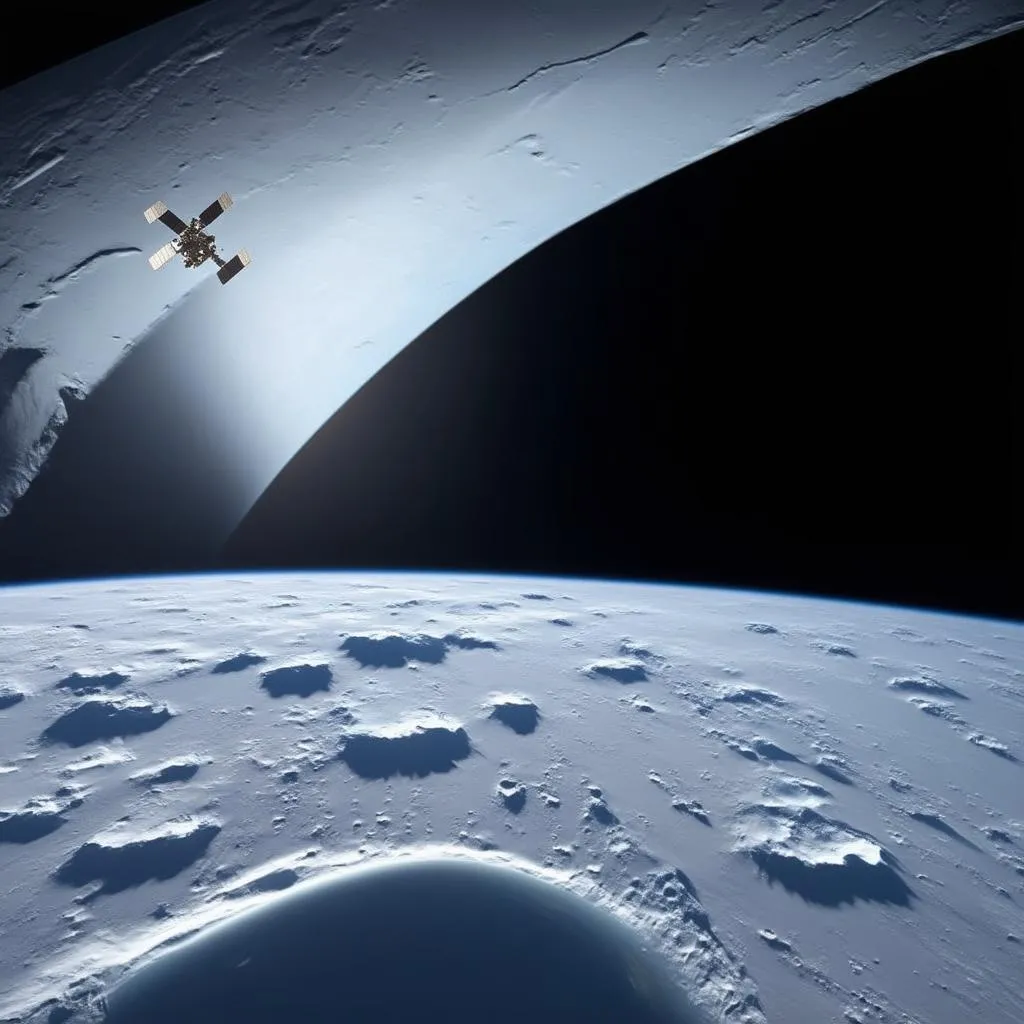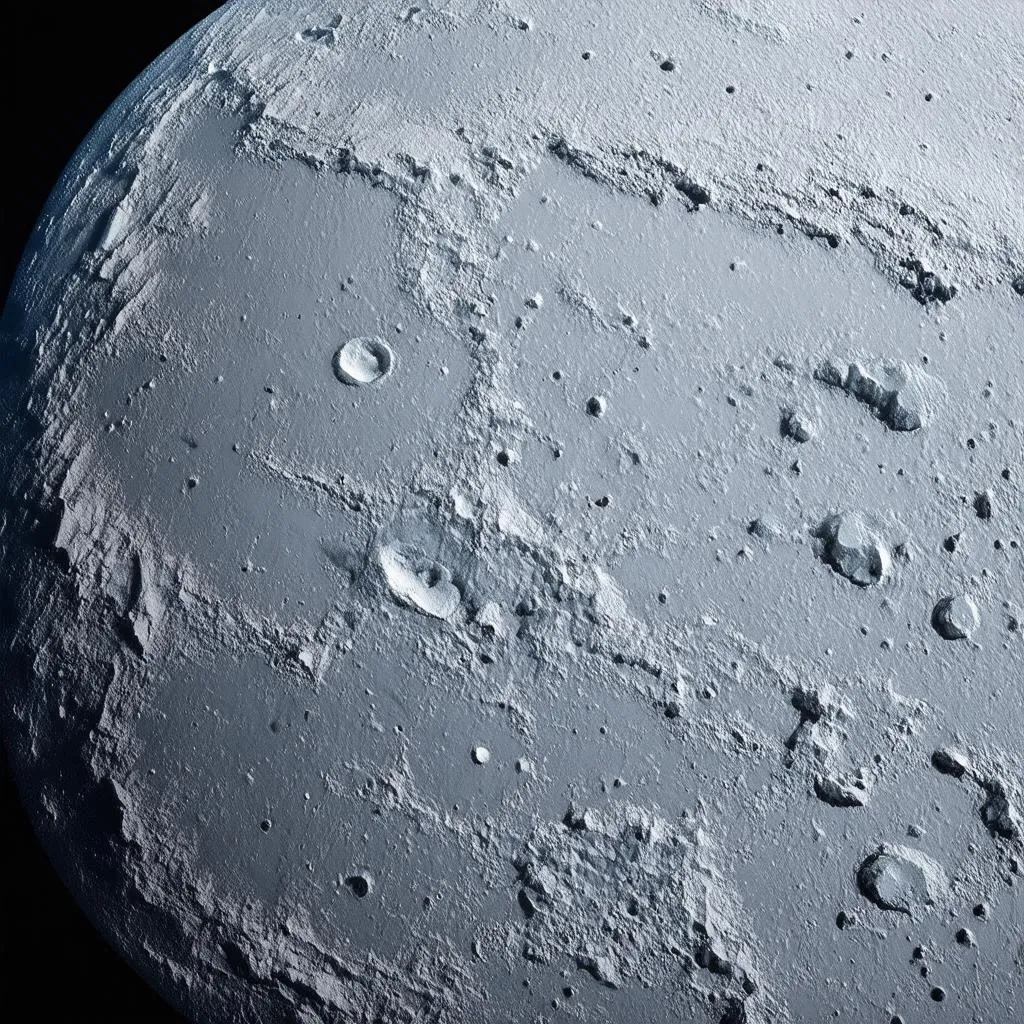Have you ever gazed up at the night sky and wondered about the distant, mysterious Pluto? Once considered the ninth planet, this celestial dwarf holds a certain allure for its sheer distance and icy beauty. But how long would it actually take to journey to this remote world? Buckle up, space cadets, because we’re about to embark on a hypothetical voyage to the edge of our solar system!
A Cosmic Voyage: Factors Affecting Travel Time
While a trip to Pluto isn’t exactly a weekend getaway, understanding the factors involved can make the vastness of space a little less daunting.
Distance and Orbital Mechanics
Pluto’s distance from Earth is anything but constant. Its elliptical orbit takes it on a cosmic dance, varying its distance from us between 2.66 billion miles at its closest to 4.67 billion miles at its farthest. This means our travel time could be significantly impacted depending on where Pluto is in its orbit.
Speed is Key
Just like a road trip, the faster your spacecraft, the quicker you’ll reach your destination. But in the vastness of space, we’re talking about speeds that would make a rocket car look like a snail. To put things into perspective, let’s consider the New Horizons spacecraft, the fastest human-made object to ever leave Earth.
New Horizons: A Speedy Ambassador
Launched in 2006, New Horizons reached Pluto in just over 9 years, traveling at a blistering pace of 36,373 miles per hour. This impressive feat of engineering provides a benchmark for potential future missions.
 Pluto and New Horizons Spacecraft
Pluto and New Horizons Spacecraft
Planning Your Pluto Expedition: A Timeline
While no concrete plans for manned missions to Pluto exist (yet!), let’s imagine we have the technology for such an endeavor. Using New Horizons’ speed as a guide, a round trip to Pluto might look something like this:
- Outbound Journey: Approximately 9-12 years.
- Exploration Time: Depending on the mission’s goals, this could range from a few days to several weeks.
- Return Journey: Another 9-12 years.
This hypothetical timeline highlights the incredible commitment and planning required for such a mission.
The Challenges of Deep Space Travel: More Than Meets the Eye
Journeying to Pluto isn’t just about covering an incredible distance. It presents a multitude of challenges, including:
- Fuel Efficiency: Carrying enough fuel for such a long journey is a massive hurdle. Scientists are exploring innovative propulsion systems like ion propulsion to address this.
- Radiation Shielding: Deep space is teeming with harmful radiation. Protecting astronauts from prolonged exposure is crucial.
- Psychological Impact: The isolation and confinement of such a lengthy mission would require rigorous psychological training and support for the crew.
The Future of Pluto Exploration
Despite the challenges, the scientific allure of Pluto is undeniable. Future missions might involve:
- Orbiters: A dedicated orbiter could provide detailed maps and data about Pluto’s surface, atmosphere, and geology.
- Landers: Touching down on Pluto’s surface would allow for direct analysis of its icy plains and potential for harboring signs of ancient life.
FAQs: Pluto Travel Queries Answered
Q: How long would it take to travel to Pluto at the speed of light?
A: Light travels at a staggering 186,282 miles per second. Even at this mind-boggling speed, it would take approximately 5.5 hours for light from the Sun to reach Pluto.
Q: What would the temperature be like on Pluto?
A: Bundle up! With an average surface temperature of -375 degrees Fahrenheit, Pluto is a frigid world.
 Pluto Surface and Icy Plains
Pluto Surface and Icy Plains
Travelcar.edu.vn: Your Guide to Cosmic Adventures
While a physical trip to Pluto might be a while off, you can explore the wonders of the universe with Travelcar.edu.vn. Dive into fascinating articles about space travel, discover the latest discoveries about our solar system, and fuel your passion for all things cosmic. From the comfort of your home, embark on virtual journeys to distant stars and expand your knowledge of the cosmos. Who knows, maybe one day, you’ll be the one planning a real-life expedition to Pluto!